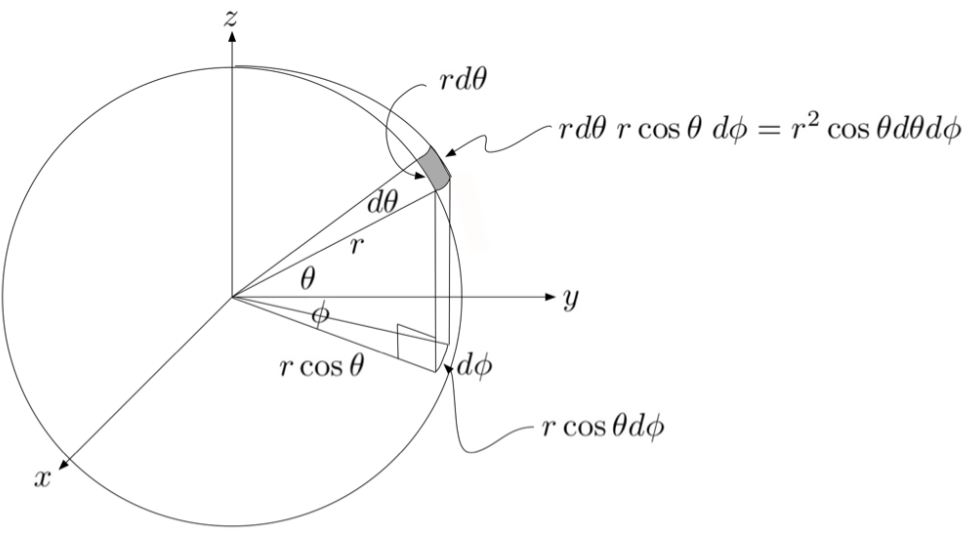Below is an image to calculate the surface area of a sphere using dA. I can see how rcosθdϕ works, but I don't understand how that side can't just be rdϕ with a slanted circle representing the arc length. The second part I don't understand is why it is integrated from π/2 to -π/2. See attached image.
Below is an image to calculate the surface area of a sphere using dA. I can see how rcosθdϕ works, but I don't understand how that side can't just be rdϕ with a slanted circle representing the arc length. The second part I don't understand is why it is integrated from π/2 to -π/2. See attached image.
Algebra & Trigonometry with Analytic Geometry
13th Edition
ISBN:9781133382119
Author:Swokowski
Publisher:Swokowski
Chapter6: The Trigonometric Functions
Section6.4: Values Of The Trigonometric Functions
Problem 38E
Related questions
Question
Below is an image to calculate the surface area of a sphere using dA. I can see how rcosθdϕ works, but I don't understand how that side can't just be rdϕ with a slanted circle representing the arc length. The second part I don't understand is why it is integrated from π/2 to -π/2. See attached image.

Transcribed Image Text:rd0
rd0 r cos 0 dø = r² cos Od0do
do
r cos 0
ydø
r cos Odø
Expert Solution
This question has been solved!
Explore an expertly crafted, step-by-step solution for a thorough understanding of key concepts.
Step by step
Solved in 3 steps with 3 images

Recommended textbooks for you

Algebra & Trigonometry with Analytic Geometry
Algebra
ISBN:
9781133382119
Author:
Swokowski
Publisher:
Cengage

Linear Algebra: A Modern Introduction
Algebra
ISBN:
9781285463247
Author:
David Poole
Publisher:
Cengage Learning

Algebra & Trigonometry with Analytic Geometry
Algebra
ISBN:
9781133382119
Author:
Swokowski
Publisher:
Cengage

Linear Algebra: A Modern Introduction
Algebra
ISBN:
9781285463247
Author:
David Poole
Publisher:
Cengage Learning